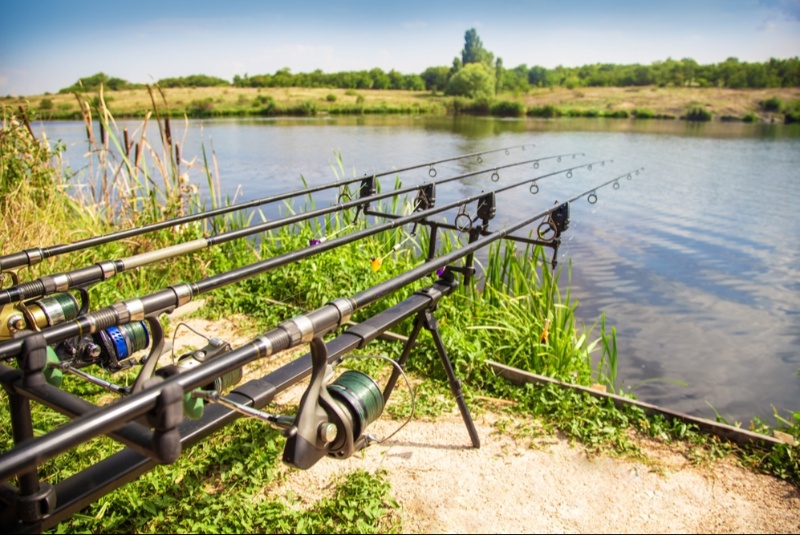Selecting the perfect fishing rod is essential for a successful and enjoyable fishing experience. Whether you're a seasoned angler or a beginner, the right fishing rod can significantly impact your ability to catch fish and enjoy your time on the water. With various types of rods, materials, and features to consider, it can be challenging to know which one is best for your needs. This comprehensive guide will help you navigate the world of fishing rods, covering everything from materials to action types, ensuring that you find the perfect rod for your fishing adventures.
Understand Different Types of Fishing Rods
Fishing rods come in various types, each designed for a specific style of fishing. Some of the most common include spinning rods, casting rods, fly rods, and surf rods. Spinning rods are versatile and ideal for beginners, as they are easy to use with spinning reels and work well for light to medium fishing. Casting rods offer more accuracy and are suitable for more experienced anglers. Fly rods are designed specifically for fly fishing and require special casting techniques. Surf rods are longer and stronger, ideal for saltwater fishing. Understanding the different types of rods will help you choose the best one for your preferred fishing style.
Consider the Material of the Rod
The material of the fishing rod plays a significant role in its performance, durability, and sensitivity. Fishing rods are typically made from graphite, fiberglass, or composite materials. Graphite rods are lightweight, sensitive, and offer excellent casting accuracy, making them popular among experienced anglers. Fiberglass rods are more durable and flexible, making them ideal for beginners or for fishing in heavy cover. Composite rods combine the best of both materials, offering a balance of strength and sensitivity. By considering the material, you can choose a rod that suits your fishing style and provides the right balance of performance and durability.
Understand the Importance of Rod Length
Rod length is another critical factor in choosing a fishing rod. Fishing rods typically range from 5 to 12 feet in length, with shorter rods offering more accuracy and longer rods providing greater casting distance. Shorter rods (5 to 7 feet) are ideal for close-quarters fishing, such as when fishing from a boat or in dense cover. Longer rods (8 to 12 feet) are better suited for open water or surf fishing, where you need to cast further. The length you choose should match the type of fishing you plan to do and the environments you’ll be fishing in. By understanding the importance of rod length, you can select the ideal size for your fishing needs.
Consider Rod Power and Action
Rod power and action are two crucial elements that determine how a fishing rod performs under pressure. Rod power refers to the rod’s strength and ability to handle different line weights and lures. Power is usually classified as light, medium, or heavy. Light power rods are best for small fish and lighter tackle, while heavy power rods are designed for larger fish and heavier lures. Action refers to where the rod bends when pressure is applied. Fast action rods bend near the tip, providing quick hook-setting power, while slow action rods bend throughout the length, offering more flexibility and sensitivity. By considering both power and action, you can choose a rod that performs well with your preferred fishing technique and target species.
Choose the Right Reel Compatibility
The compatibility between your fishing rod and reel is essential for smooth performance and casting accuracy. Different types of rods are designed to work with specific reels, such as spinning reels, baitcasting reels, or fly reels. Spinning rods are designed for use with spinning reels, which are mounted underneath the rod and are easy to operate. Casting rods are paired with baitcasting reels, which provide more control and accuracy but require more skill to use. Fly rods are used with fly reels, which are designed for the unique requirements of fly fishing. Ensuring that your rod and reel are compatible will enhance your fishing experience and reduce the chances of equipment malfunctions.

Evaluate Rod Handle and Grip
The handle and grip of a fishing rod can significantly affect your comfort and control, especially during long fishing sessions. Rod handles are typically made from cork or EVA foam, both of which offer different benefits. Cork handles are lightweight, sensitive, and provide a classic feel, but they may not be as durable as EVA foam. EVA foam handles are more resistant to wear and tear and provide a firm, comfortable grip even when wet. The length and thickness of the handle also play a role in comfort and control, with longer handles offering more leverage for casting and fighting larger fish. By evaluating the handle and grip, you can choose a rod that feels comfortable and performs well in various fishing conditions.
Consider the Line Guides
Line guides are the small rings that run along the length of the fishing rod, guiding the fishing line and distributing the tension evenly. The quality and placement of line guides can affect casting distance, accuracy, and the overall performance of the rod. Higher-quality rods often feature more durable and smooth guides made from materials like stainless steel, ceramic, or titanium. These materials reduce friction and help prevent line wear. The placement of the guides should also be evenly spaced to ensure consistent pressure distribution. By choosing a rod with high-quality line guides, you can improve your casting performance and ensure the longevity of your fishing line.
Consider Portability and Storage
If you plan to travel with your fishing rod or need a compact solution for storage, portability is an important consideration. Telescopic rods and multi-piece rods offer excellent portability, as they can be collapsed or broken down into smaller sections for easy transport. Telescopic rods are especially convenient for anglers who hike to remote fishing spots or need to pack their gear in a small vehicle. While multi-piece rods are less compact than telescopic rods, they often provide better performance and durability. If portability is a priority, consider investing in a rod that offers easy storage and transport without sacrificing performance.
Set a Budget for Your Fishing Rod
Fishing rods come in a wide range of prices, from budget-friendly options to high-end models. Your budget will play a significant role in determining which rod you choose, but it’s important to remember that you often get what you pay for. Higher-quality rods made from premium materials may come with a higher price tag, but they often offer superior performance, durability, and comfort. However, there are many affordable rods that provide excellent value for money, especially for beginners or casual anglers. By setting a budget and sticking to it, you can find a high-quality rod that meets your needs without overspending.
Test the Rod Before Purchasing
If possible, it’s always a good idea to test a fishing rod before making a purchase. Testing the rod allows you to assess its balance, weight, and overall feel in your hands. Many outdoor stores or fishing gear shops have testing areas where you can practice casting or holding the rod to see how comfortable it feels. If you’re purchasing a rod online, read customer reviews to get a sense of the rod’s performance and quality. Additionally, check the store’s return policy in case the rod doesn’t meet your expectations. Testing the rod ensures that you’re making an informed decision and investing in a product that works well for your fishing needs.
Choosing the right fishing rod is a critical step in ensuring a successful and enjoyable fishing experience. By considering factors like the type of rod, material, length, power, and action, you can find a rod that suits your fishing style and target species. Additionally, paying attention to reel compatibility, handle comfort, line guides, and portability will further enhance your fishing adventures. Whether you’re a beginner or a seasoned angler, investing in a high-quality fishing rod tailored to your needs will improve your chances of success on the water and provide you with years of enjoyable fishing experiences.




